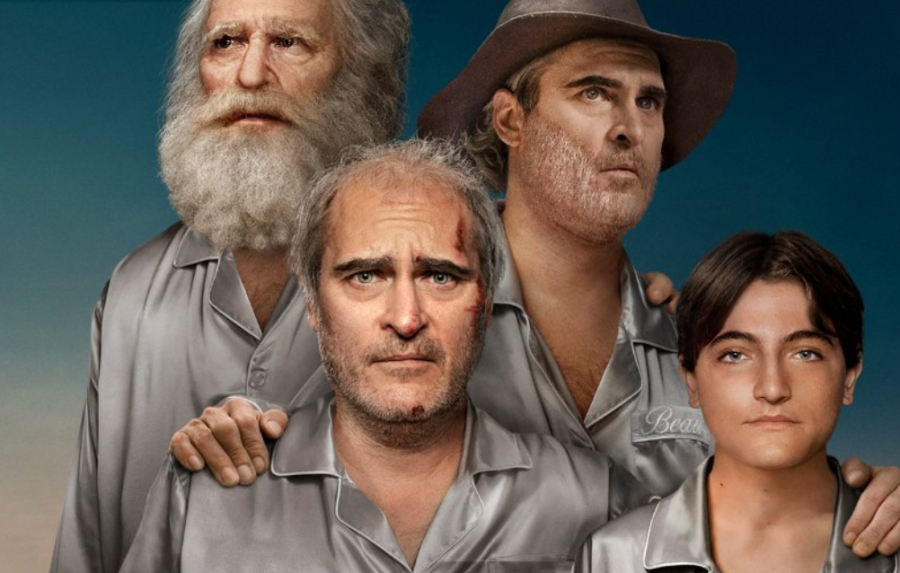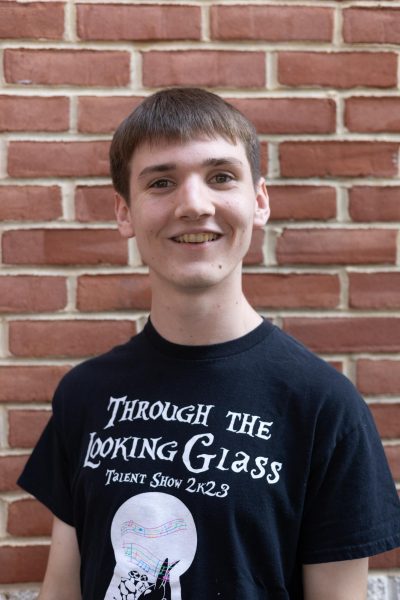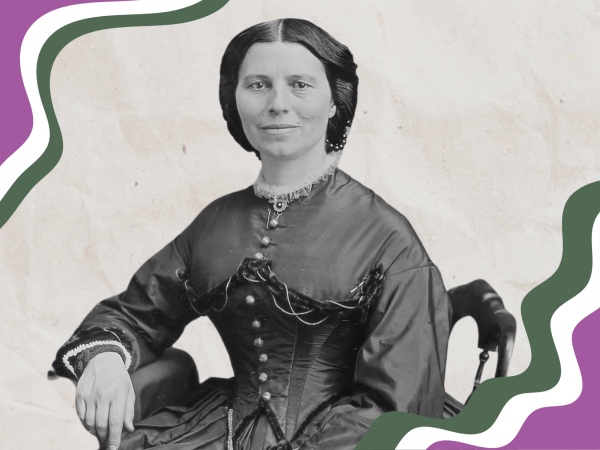“Beau is Afraid”: A delightful, anxiety-fueled endurance test of epic proportions
The opening of Ari Aster’s latest film, “Beau is Afraid” lasts only a couple minutes, but manages to be startling, uncomfortable, funny and inexplicable — indicative of the entire 3-hour experience.
May 1, 2023
A black void fills the screen. Silence persists until scrambled noises periodically fill the theater. A blinding flash reveals bright lights and blurred images of doctors. As the crying of a newborn intensifies, it becomes clear that we are witnessing the birth of the main character through his own eyes.
The opening of Ari Aster’s latest film, “Beau is Afraid” lasts only a couple minutes, but manages to be startling, uncomfortable, funny and inexplicable — indicative of the entire 3-hour experience.
Aster originally pitched “Beau is Afraid” over a decade ago but encountered trouble finding a studio willing to fund his unorthodox project. In 2021, Aster finally received the green light from production companies A24 and Square Peg to start the development of his deranged fever dream.
The success of his horror movies “Hereditary” and “Midsommar” likely helped him in his search for a studio, along with his decision to partner with Oscar-winning actor Joaquin Phoenix.
In Aster’s latest film, Phoenix’s performance is crucial to his surreal vision. Phoenix’s performance as Beau Wasserman, an anxious middle-aged man thrust unwillingly into situations of conflict and peril on his way to visit his mother, skillfully displays emotions of dread and palpable feelings of discomfort as he’s pursued and harassed by characters and circumstances outside of his control. The endearingly unconventional performance is thrilling to watch and masterfully elevates the film from surface-level entertainment to a complex experience that stands on its own.
Rather than rigidly sticking to the standard three-act structure of set-up, confrontation and resolution that most screenwriters tend not to deviate from, Aster, the sole credited writer, takes a novelistic approach to storytelling. He cites works such as “The Aeneid” and “Don Quixote” as key inspirations for Beau’s adventure and the zig-zags through different settings.
Although the film opens in an unpredictable and violent unnamed city, the audience travels with Beau to various locations, including a quiet suburban home, a secluded forest and Beau’s mother’s house. Despite this incredible variety, the ample screen time given to each location allows each to form a distinct identity, never rushing from one idea or set piece to the next.
Throughout the film, Beau stands paralyzed in the face of uncertainty and fear of his surroundings. Often he’s frozen by indecision, leaving him with nothing to do but stare weakly into the distance, perfectly underscoring the flaws that make him such a compelling character. Again and again, he’s incapable of making decisions when confronted with accusations and choices, unable to act on anything even when the stakes couldn’t be higher.
Although it features the subtext and depth that fans of Aster’s previous work have come to expect, “Beau is Afraid” never takes itself too seriously. Consequently, it’s rather unconcerned with presenting itself as elevated or overly sophisticated. Aster chose to swing for the fences and created something that gleefully subverts expectations, inviting its audience members to find the humor in oddly bleak scenarios. Unrestrained from typical film conventions, the movie explores themes and sequences that otherwise wouldn’t fit without ever feeling like a miscalculation.
The filmmaking is also especially impressive, with precise editing and striking cinematography by Pawel Pogorzelski. But that craft is more than an exercise in style; it builds tension that leaves viewers utterly distressed — a feeling only compounded by the unexpected and abrupt ending.
A somewhat nightmarish panic attack of a movie, “Beau is Afraid” delivers a specific and rewarding emotional high unobtainable anywhere except in the theater. It’s the kind of unusual masterpiece that gives its viewers something they have never seen before and forces them to leave with a completely different spectrum of thoughts and feelings than when they first sat down.












